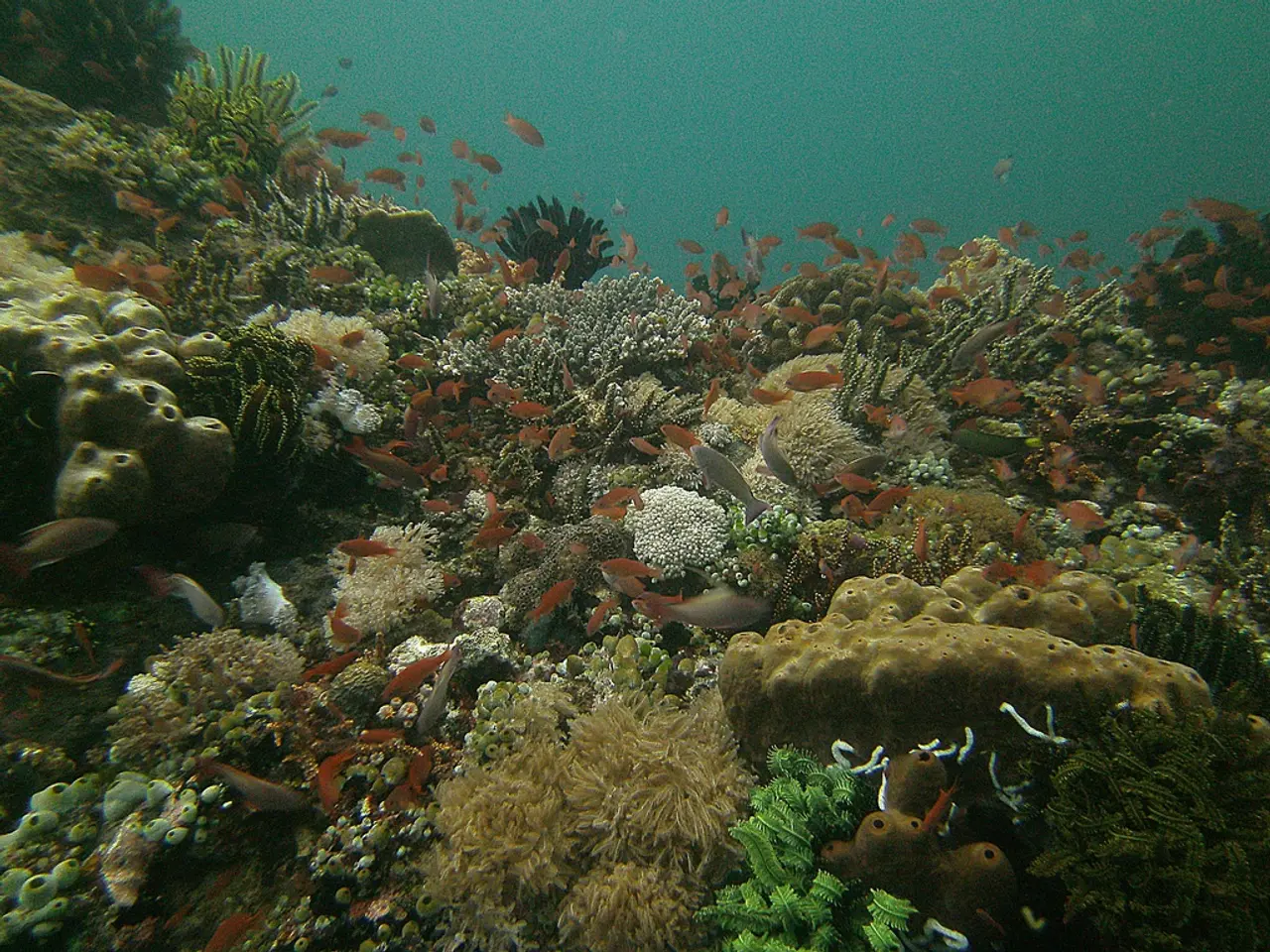Harmful Effects of Sunscreens on Ocean Health Highlighted by Experts
Sunscreen, designed to protect us from harmful UV rays, has raised concerns among experts and environmentalists due to its potential effects on marine ecosystems.
Each year, an estimated 6,000 to 14,000 metric tons of UV filtering chemicals find their way into coastal regions with coral reefs. These chemicals, such as avobenzone, oxybenzone, octocrylene, and ecamsule, can enter the bloodstream when applied to the skin and have been found to harm sensitive marine ecosystems.
The presence of these chemicals has led to local, regional, and national bans of some chemical ingredients in sunscreens. However, the issue is not just limited to the beach. Many treatment facilities struggle to remove these chemicals from wastewater, allowing them to enter the environment.
Some of these chemicals, like oxybenzone and octinoxate, have been under scrutiny for their potential endocrine-disrupting properties. Studies suggest that they should be avoided during pregnancy due to these concerns.
Another concern is the bioaccumulation of UV filters and other chemicals in marine species, which may end up being consumed by people. This has raised questions about the safety of seafood production, as approximately 4.3 billion people are reliant on fish for 15% of their protein intake.
The EU and the Australian government have taken steps to limit the use of oxybenzone and other potentially harmful chemicals due to health concerns. The US Food and Drug Administration, on the other hand, has assessed that only zinc oxide and titanium oxide are "generally recognized as safe and effective" as sunscreen ingredients.
Environmentally friendly alternatives to chemical UV filters are being researched and developed. These alternatives primarily include mineral-based UV filters such as non-nano titanium dioxide and zinc oxide, which act as a physical barrier by reflecting UV rays rather than absorbing them. These mineral sunscreens are considered safer for coral reefs and aquatic ecosystems and often come certified as natural cosmetics.
However, not all sunscreens branded as "reef-safe" or "coral-safe" live up to their claims. Some of these products still contain toxic chemicals, while others lack evidence to support their safety goals.
The issue of sunscreen pollution is complex, as these chemicals exist in the environment alongside a host of other contaminants. The interactions between these contaminants remain largely unknown, posing a significant challenge for researchers.
Experts suggest using mineral-based sunscreens as the safest option from a health and environmental perspective. However, decisions on use should be based on what works best for each person. Companies should fully disclose active filter ingredients and conduct adequate toxicity testing to validate their claims.
Credible, standardized testing is urgently needed to determine the safety of sunscreens marketed as reef- or coral-safe. This testing would help ensure that the products we use to protect ourselves from the sun do not harm the marine ecosystems we depend on for food and sustainability.
Read also:
- Understanding Hemorrhagic Gastroenteritis: Key Facts
- Stopping Osteoporosis Treatment: Timeline Considerations
- Tobacco industry's suggested changes on a legislative modification are disregarded by health journalists
- Expanded Community Health Involvement by CK Birla Hospitals, Jaipur, Maintained Through Consistent Outreach Programs Across Rajasthan








